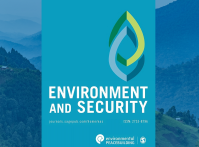Persistent drought, heat, electrical brownouts, and overconsumption have forced the government of Bangladesh to militarize the distribution of water in its
capital of Dhaka. “Deployment of military for water distribution is not a permanent solution,”
said Abdur Rahim to the Financial Express, as he waited for water. “We want a permanent way out. The government must rise up to the occasion as it has become a national crisis.”
The Bangladesh military will be assisting the
Dhaka Water Supply and Sewage Authority’s (WASA) tanker truck operations and ensuring security as they distribute their water throughout the parched city. Due to the sensitivity of these critical operations, commanding officers have been assigned to monitor each water district.
During an interview with Bangladesh News 24, the WASA chairman promised residents that the military deployment, though becoming a yearly response to seasonal droughts, would be removed as soon as the drought abated, noting that “the army will be withdrawn once the situation improves.”
As a result of a falling water table and an overburdened energy grid, WASA is only able to provide 1.5 billion liters of water a day to a public that requires over 2.25 billion liters. “The situation is turning from bad to worse every day, we stand in long queues for hours for water,” rickshaw-puller Mohammad Salam told Bangladesh News.
In recent days, hundreds of Dhaka residents defied government protest bans and took to the streets to demand clean drinking water. Though currently peaceful, these protests echo similar building tensions in 2006 that culminated in clashes with police and the deaths of 20 people.
Long-term population pressures in Bangladesh and a reliance on groundwater have only served to exacerbate the current crisis. In an op-ed in The Daily Star, Dr. M. Rafique Uddin drew attention to the city’s unsustainable reliance on groundwater supplies and warned that construction trends were forecasting weaker recharge rates for the fragile aquifers. “Because of land-filling, surface water does not percolate and recharge the groundwater table,” he wrote. “It is estimated that we are losing 1-2 inches of water table every year. With more and more land filling and concretization of Metro Dhaka, this rate of groundwater depletion would be worse.”
During a ceremony for a new water treatment plant, Prime Minister Sheikh Hasina placed much of the blame on a burgeoning population. Not withstanding, the Bangladeshi government is working to provide its citizens with more water. WASA’s groundwater pumps are currently running at only partial capacity due to a 1,500 megawatt shortage of power. The government hopes a new nuclear power deal with Russia will help address the energy challenge.
The two planned 1,000 megawatt nuclear plants will be critical stopgaps to address current and future demand woes. The plants, however, will only come online in 2017—little comfort for those currently without power or water. Already, as clean water stocks vanish, the Institute of Cholera and Diarrhoeal Diseases and Research, Bangladesh (ICDDR,B) has seen a concomitant rise in the number of people complaining of symptoms of water-borne diseases, such as diarrhea and cholera. Those affected by the shortage will have little respite, as forecasters indicate a continued heat wave for the region for the coming weeks.
Photo Credits: “Access to Clean Drinking Water”, Flickr User DFID
 A Publication of the Stimson Center.
A Publication of the Stimson Center.







